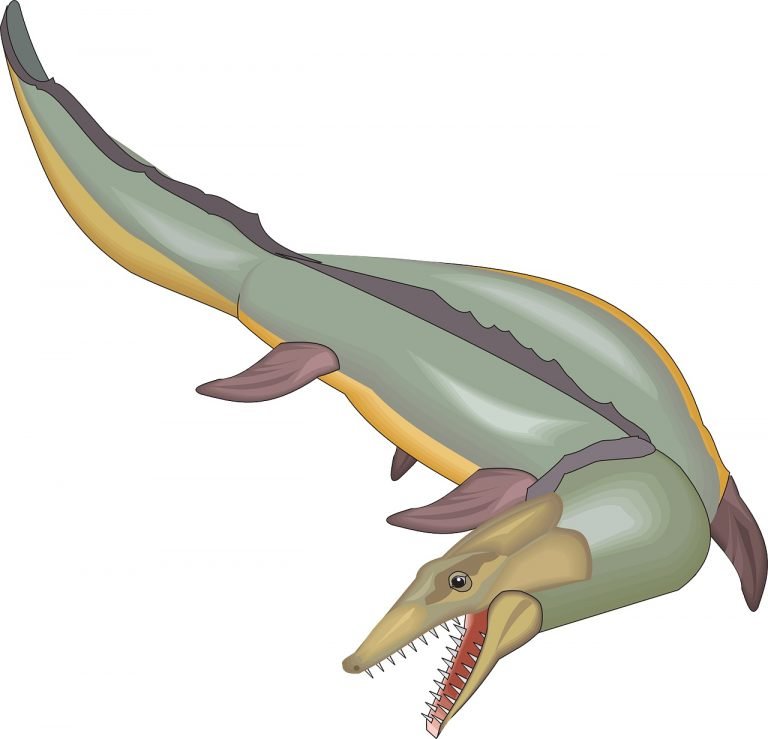September 14, 2021
-Mysterious Universe
A huge 18-foot-long sea monster (5.5 meters in length) once inhabited the Western Interior Seaway where the state of Kansas is now located. The remains of the creature were found in the 1970s but experts couldn’t completely classify it so they put it away with other mosasaur fossils belonging to the Platecarpus genus. The specimens were stored at Fort Hays State University’s Sternberg Museum of Natural History (FHSM) in Kansas. But new studies have revealed new information regarding the giant sea monster.
By analyzing portions of the skull, jaw, and other bones found behind the head, researchers were able to confirm that it actually wasn’t part of the Platecarpus genus but was instead closely related to a rare mosasaur species that experts had only known about from just one previously found fossil. They named this creature Ectenosaurus everhartorum (previously known as the FHSM VP-5515 specimen). It is only the second species belonging to the Ectenosaurus genus (the other was identified in 1967 as Ectenosaurus clidastoides).
There was once specific difference between the Ectenosaurus everhartorum and the Ectenosaurus clidastoides which was that the end of E. Everhartorum’s snout didn’t have a bony bump. Additionally, its snout was shorter than E. clidastoides’.
In an interview with Live Science, Takuya Konishi, who is a vertebrate paleontologist and assistant professor at the University of Cincinnati, described how they were able to properly categorize this new species, “We knew it was a new species, but we didn’t know if it was an Ectenosaurus or not.” “To answer that puzzle, we were eventually able to find another feature where the jaw joint was, at the back end of the lower jaw.”
At that point, they found a tiny notch that hasn’t been detected in any other mosasaurs with the exception of one. “That little depression turned out to be a newly discovered consistent feature for the genus Ectenosaurus,” Konishi explained, “You have this Ectenosaurus united by the little notch at the end of the lower jaw, but then it’s consistently different at the level of the species from the generic type — that is to say, the first species assigned to the genus.”
The Ectenosaurus everhartorum species lived approximately 80 million years ago. Its head was around 2 feet in length (0.6 meters); and it had a long, slim, narrow snout that was full of teeth as described by Konishi, “It’s a kind of skinny snout for agile, speedy snapping of fish, rather than biting into something hard like turtle shells.”
It’s hard to imagine an 18-foot-long sea monster swimming around western Kansas but that’s exactly what was happening 80 million years ago. In fact, over 1,800 mosasaur fossils have been unearthed there; however, only two have been recovered that belonged to the Ectenosaurus genus. (Drawings of the Ectenosaurus everhartorum’s jawbone can be seen here.)
The study was published in the Canadian Journal of Earth Sciences where it can be read in full.




